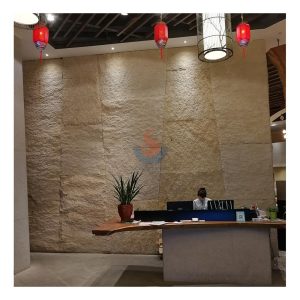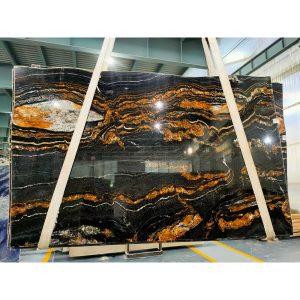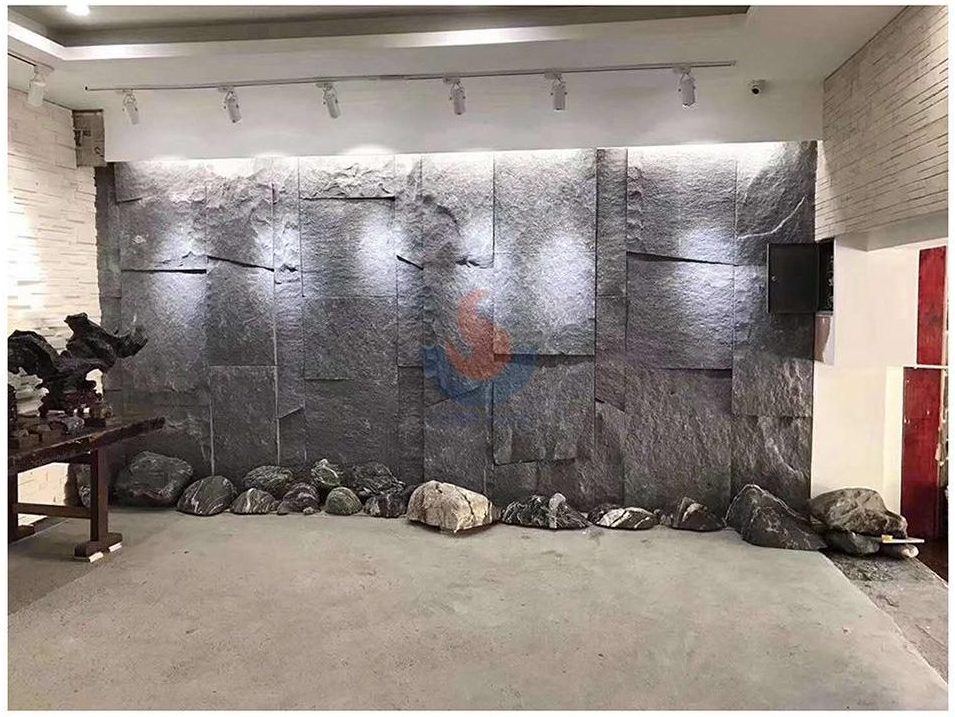Have you ever walked down an old street and been attracted by the solid and smooth granite slabs on both sides? These rocks that have endured over time have a formation process full of geological miracles. Granite, as an amazing igneous rock, is widely used in architecture and decoration with its hard texture and beautiful texture. But from molten lava down in the earth, how did these rocks develop? Today, let’s unveil the mystery of granite formation and explore the formation process of this natural miracle.

Split face rust yellow sunset granite stone wall cladding stone
Deep Earth secrets: the birth of magma
Everything starts with the magma inside the earth. The earth’s internal structure is split into the crust, mantle, and core; among these, the mantle is the main site of granite development. Deep in the mantle, the temperature and pressure are extremely high, and molten rocks form magma under these conditions. Magma is a liquid rock composed of molten minerals and gases, which accumulate and form magma chambers inside the earth.
These magma chambers resemble below ground melting pots. The magma will ascend from the mantle, pass through the crust, and go to the surface when its temperature and pressure approach a specific level. This process is the starting point of granite formation. Magma gradually cools and solidifies in the crust below the surface, forming a preliminary rock structure.
Cooling and solidification: granite’s forming process
As magma gradually moves toward the surface, it cools and solidifies deep in the crust. The temperature and pressure deep in the crust are really high, hence this process is quite slow. The prototype of granite, “plutonic rock,” will arise from the gradually cooling magma.
The main components of granite are quartz, feldspar and mica. One of the most often occurring rock minerals, feldspar is usually white or pink; mica is a layered mineral, usually black or gold; quartz is a clear or translucent mineral with great hardness. These minerals gradually crystallize in the magma, forming the unique spotted texture of granite.
Formation of intrusive rock bodies: cooling of magma chambers
During the cooling process at depth, the magma in the magma chamber progressively creates “intrusive rock bodies”—larger rock bodies”. In the crust, these intrusive rock bodies can create magma chambers, rock bodies, and dykes among other varying sized formations. Granite is usually formed in large magma chambers that slowly cool deep in the Earth’s crust, forming larger rocks.
The movement of the Earth’s crust over time influences these rocks, which progressively climb to almost surface level. During this process, the intrusive rock is squeezed by the pressure of the Earth’s crust, causing cracks and deformations in the rock. The ultimate form of the granite is affected by these fissures and distortions.
Granite’s mineral composition consists in quartz, feldspar, and mica
The mineral composition of granite is key to its formation and characteristics. Granite is mostly composed of quartz, feldspar, and mica; therefore, the appearance and characteristics of the rock depend on the arrangement and quantity of each mineral.
Quartz: Quartz is a hard and transparent mineral that usually appears colorless or pale yellow. It shows up in tiny grains in granite, giving the rock a smooth, crystalline structure.
Feldspar is a silicate mineral having aluminium components. Common feldspar are potassium and albite varieties. Usually white, pink or red, they can alter granite’s color and texture.
Mica: Mica is a layered mineral that usually appears black, gold, or silver. Mica gives granite a distinct luster and offers the rock layered sensation.
Metamorphism after magma intrusion
As the crust of the planet moves and geology changes, granite might alter as well. Metamorphism refers to the physical and chemical changes that occur in rocks under conditions of high temperature and pressure, which changes the mineral composition and structure of the rock. Granite’s look and qualities may vary even if its fundamental qualities remain same during metamorphosis.
For example, minerals in granite may recrystallize to form new minerals; or the texture of granite may become more uniform. These developments affect granite’s application in construction and ornamentation as well as its appearance’s variety.
Granite erosion and weathering: the sculptor of nature
Even after its formation, granite is affected by natural factors, especially erosion and weathering. These natural processes change the surface of granite, therefore progressively altering the features and form of the rock.
Erosion is the wear and tear rocks experience from natural elements including wind, rain, ice and snow. Long-term erosion will cause granite’s surface to grow rough and uneven, creating natural textures and weathering layers.
Weathering is the surface environment’s modification of rocks brought about by physical or chemical influences. Granite’s weathering process could produce new minerals or alter its chemical makeup, therefore modifying its minerals.
These natural processes not only alter granite’s look but also influence its application and durability in several surroundings.
Application of granite and human history
Granite’s strength and resilience make it the perfect choice for building and decorative accents. Granite has been utilized by humans to create monuments, sculptures, and structures from prehistoric days. For example, the pyramids of ancient Egypt and the temples of ancient Greece used a lot of granite. These ancient remnants not only demonstrate granite’s strength but also indicate the clever use of this rock by prehistoric artists.
In modern society, granite is widely used in building facades, countertops, floors and sculptures. Granite distinguishes decorative design with its natural texture and sophisticated colors.
Future research and exploration
With the advancement of science and technology, geologists have a deeper understanding of the formation and evolution of granite. Future studies could investigate granite formation’s specifics and its variations in many geological settings. Simultaneously, new technologies could also offer more opportunities for granite to be used.
For example, scientists are studying how to use modern technology to simulate the formation process of granite to better understand the evolution of rocks. Simultaneously, sustainable design and environmentally friendly materials could affect the mining and usage of granite, thereby supporting the green development of the rock sector.

Matrix Titanium Granite slab
The formation of granite is a process full of geological miracles. From unyielding rock on the surface to lava deep in the ground, every stride reveals the might of nature and the enigmas of science. The cooling and solidification of magma, the crystallization of minerals, the formation of intrusive rock bodies, and natural erosion and weathering are all important links in the formation of granite. Knowing the development process of granite helps us not only to enjoy the beauty of this rock but also grasp the scientific ideas behind it. In the future, with the advancement of science and technology and the deepening of research, we will continue to explore the mysteries of granite and other rocks and reveal more wonders and beauty of nature.





